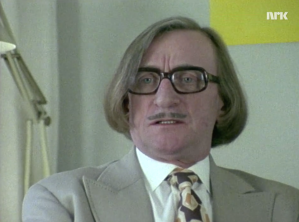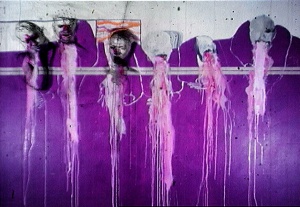Recorded conversation from 1972
Duration: 1 hour 40 minutes
This is a summary of a conversation between Wilhelm Freddie and the Danish artist Per Kirkeby which took place in 1972. The recording is unedited and belongs to Per Kirkeby.
My notes are mostly about WF’s view on Surrealism and less about his personal story.
I made it in note form, to let his statement talk for them self and make it more easy for me to go back later.

Surrealism is not an art direction, it is a state of mind/view of the world and the keyword is freedom. Freedom for the individual and in the society.
The Expressionist escape from reality, Surrealism wanted to find the way into reality.
Definition of Surrealism: The distance there was between dream and reality, the gap. For us, it was a matter of building a bridge over the gap. Make the inner and outer reality identical. That was Surrealism.
Aesthetics and moralism have nothing to do with surrealism. Perhaps they could have been there but then it was unconscious because it was not our intention.
Surrealism is based on the theory that the subconscious, the dream, the drives and instincts are the only absolute unchangeable in human life. This attitude was in conflict with the external political situation of the period (the 1930s). Surrealism denounced dictatorship because freedom was the solution.
WF had many cases, national and international, with police, authorities and other people; He was imprisoned, young right-minded destroyed his pictures into pieces, a man tried to strangle him after watching an exhibition, paintings were confiscated by the police and stored away, etc. Under the second world war, he escaped to Sweeden.
In 1937, he was invited to the first international Surrealistic exhibition at New Burlington Gallerie in London. His paintings were seized by customs and never arrived at the Gallerie.
The authorities were concerned about choking the audience, they thought the paintings were morally objectionable, they thought it was pornography.
The magic flower:
In connection with a happening, he would give a flower that was part of the set-up to a girl among the audience. But she did not want it, she reacted as if it was a plague-infested. The importance of the flower change.
WF understood that things may have a different meaning than the visible. It was what he describes as magic. Later on, he used this insight in his work.
Previously in the history of surrealism, the subject had a symbolic role for unconscious mental content. Now it’s replaced by a magically-functioning: image, object or action, which is being conveyed by an active mental energy that can interfere with the relationship between man and the outside world. Although this action is also symbolic, it is a symbol of real intervention
Skills are not the most important even I started as a naturalistic painter.
I was focused on the hallucinatory picture and recognizable and its value.
Now I’m interested in the value/interpretation of objects (its own value), a value I then use. All my things have a relation to the surrounded reality.
When something becomes a prop, I have to change it, find out something new.
Collage and the use of photos in painting:
The confrontation between the outer reality and my own created reality, I made it work together in one piece (picture). One highlights the other, I let the two things fit into a higher unit.
The surrealist attitude is built into me, but I am Wilhelm Freddie.
What I do today is decisive for next-generation action.



































